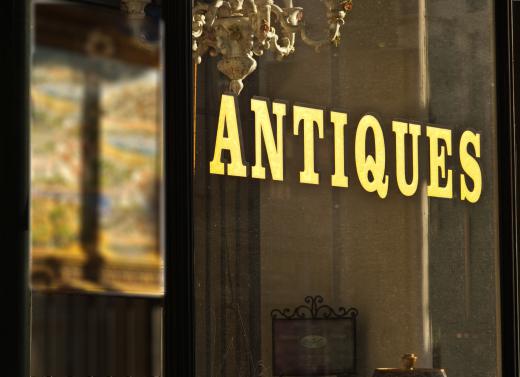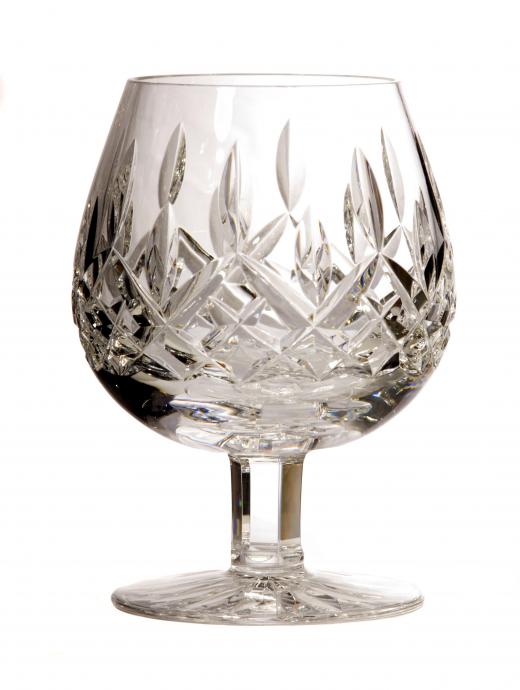Cut glass is glass that has been patterned and faceted with the use of abrasive wheels and various other cutting tools. Many beautiful antique examples can be found in museums, antique shops, and private collections, and several major glass companies continue to produce it today. Cut glass is often used as part of a formal tableware collection, and it is also a common choice for wedding or christening gifts.
Humans have been making glass for thousands of years, but it was the Romans who first started to produce cut glass with the use of stone wheels in the first century CE. The techniques used to make it are closely related to the those used to facet and polish gemstones. When glass is cut well, it sparkles and catches the light just like a gem, bouncing the light through a series of facets to create a rich rainbow effect. Cut glass became immensely popular in Europe and North America during the 18th century.

To make cut glass, a piece of glassware is blown into a desired shape, such as a goblet or bowl. Typically, the glass is very thick, to allow plenty of room for cutting deep facets. It may be clear or colored, depending on the personal aesthetic of the artisan. Once the glassware has been created, a pattern is roughly marked out, and then the artisan uses various grades of grinding wheels and cutting tools to cut the pattern out. In addition to being faceted, it can also be marked with decorative cut edges or holes.

As the glass is cut, progressively finer wheels are used so that the surface is polished. When the piece is finished, all of the edges will be smooth, and the corners may be rounded off to prevent cuts. The decorated glass may be patterned with a variety of shapes and facets. Basic geometric themes are common, but it can also be ornamented with flowers or animals. Typically, a piece feels very heavy for its size, because of the thick glass used.

Many department stores have a section of cut glass for people who want to purchase new pieces or sets. Antique stores also often sell an assortment of items, and people can also purchase this style of glassware directly from the manufacturer. It is also possible to order custom made pieces, although it can get expensive.
Ever since she began contributing to the site several years ago, Mary has embraced the exciting challenge of being a About Mechanics researcher and writer. Mary has a liberal arts degree from Goddard College and spends her free time reading, cooking, and exploring the great outdoors.

